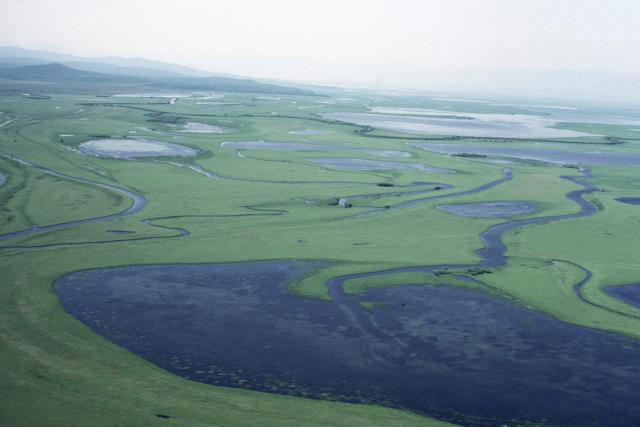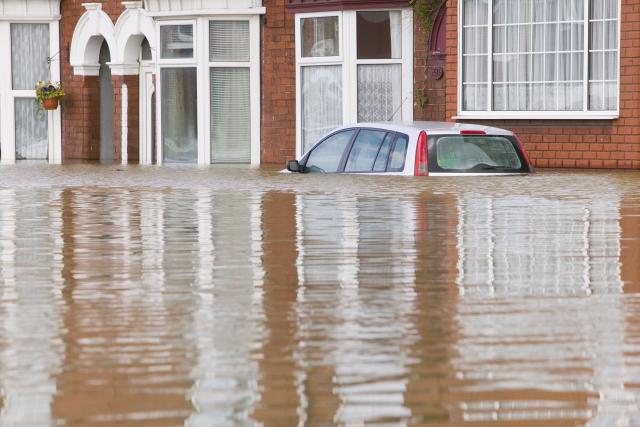Strategic Water Management in the 21st Century
It is estimated that half the world's population will live in water-stressed areas by 2025; and, that approximately $14 billion of economic damage is caused annually by flooding worldwide. Meanwhile, WWF’s Living Planet Reports and other authoritative studies have consistently described dramatic declines in populations of freshwater species around the world.
China is facing particularly acute water and river management challenges. We've worked in partnership with the General Institute of Water Resources and Hydropower Planning and Design (GIWP, the strategic planning arm of China’s Ministry of Water Resources) to produce a series of books that bring together experiences and lessons from around the globe on how to better plan and manage our precious water resources in the 21st Century. This work has been supported primarily by the HSBC Water Programme with additional inputs from the Asian Development Bank (ADB) and UNESCO.
The books offer insight, guidance and frameworks on best practice on a range of issues covering the allocation of water, the management of flood and drought risks, the restoration of rivers and river basin planning.
We have undertaken this project primarily to provide insights that will help GIWP set rules and guidelines that will enable China to manage rivers and water resources more sustainably for the future. However, we have published the books in English through UNESCO in order that the lessons from the project can be shared more widely around the world. We have already used these lessons ourselves to support WWF projects as far afield as Malaysia, Kenya, Tanzania, Brazil and Myanmar.
Meanwhile, our collaboration with GIWP continues and we hope to publish further books in the series in due course.
Read more about each of the books below.

Growing competition for scarce water resources has driven major changes in the way river basin planning is undertaken. This has resulted in a shift away from 'technical' approaches designed to maximise water availability and led to more strategic approaches to basin planning. These approaches aim to optimise outcomes by reconciling the competing demands of different sectors of the economy, the natural environment, and society as a whole.
Drawing on experiences from around the world, this book distils best practice approaches to basin planning in large and complex basins and provides an overview of the emerging good practice.
Part A describes the evolution of basin planning and provides a framework for strategic basin planning and environmental planning, including ‘ten golden rules’.
Part B describes the techniques involved in basin planning, including those for conducting a situation assessment, addressing uncertainty, identifying objectives, balancing trade-offs and developing thematic plans.
Read the River Basin Planning (2013) PDF.

As water scarcity has increased globally, water allocation plans and agreements have taken on increasing significance in resolving international, regional and local conflicts over access to water.
This book considers modern approaches to dealing with these issues at the basin scale, particularly through the allocation of water amongst administrative regions. Drawing on experiences from around the world, this book distils best practice approaches to water allocation in large and complex basins and provides an overview of emerging good practice.
Part A describes the evolution of approaches to water allocation, and provides a framework for water allocation planning at the basin scale, including ‘ten golden rules’. It discusses approaches to defining shares of water and to dealing with the variability and uncertainty of future water availability.
Part B describes some of the techniques involved in water allocation planning, including assessing and implementing environmental flows and the use of socio-economic assessments in decision-making.

Over recent decades the concept of flood risk management has been cultivated across the globe, with varying levels of implementation. A risk management approach is both more complex and more effective than conventional flood protection as it involves long-term, system-based analysis and strategy.
This book distils best practice approaches to flood risk management in challenging large scale and inter-related environments, encapsulated in a set of ‘golden rules’.
Part A provides a historical perspective on flood events that have shaped modern management approaches.
Part B defines risk, the characteristics of strategic flood risk management, and governance frameworks to bridge the gaps between policy, planning and action. It describes the development of adaptive strategies and ways in which critical ecosystem services can be safeguarded.
Part C presents a set of tools and techniques for analysing risk and uncertainty and for using spatial planning to make effective risk-based decisions for the management of assets, infrastructure and insurance such that society can become more resilient to flood events.
Read the Flood Risk Management (2013) PDF and associated online journal article.

Water resources are increasingly a source of tension. This tension often peaks during periods of drought. Historically, responses to drought events have been reactive rather than proactive. The impacts of demographic, economic and climatic shifts mean that such reactive approaches are no longer fit for purpose.
This book presents a framework for Strategic Drought Risk Management (SDRM). SDRM is a continuous process of analysis, adjustment and adaptation of policies and actions to reduce drought risk, and is seen as part of a wider approach to water security and water-related basin planning. SDRM acts to reduce risk and promote environmental, societal and economic resilience now and in the future.
Part A provides a historical perspective on drought events that have shaped modern management approaches.
Part B defines risk, and lays the framework and ‘golden rules’ of SDRM. It describes the measures and tools used in the development and implementation of adaptive strategies, safeguarding of ecosystem services and enhancing resilience to drought.
Part C presents a range of case studies of existing and emerging practice of SDRM from around the world.
Read the Drought Risk Management (2016) PDF and associated online journal article.

River restoration is an increasingly common response to declining river health in many parts of the world. Its role in strategic water resources management is likely to grow. Conventional approaches to river restoration have largely been developed in Europe and North America. As such, they need review and adaption if they are to be useful in complex contexts associated with river basins in emerging economies.
This book presents a framework for a strategic approach to planning and implementing river restoration measures that can apply in developed and emerging regions. The framework balances the multiple roles performed by river systems and supports river restoration that better aligns with the broader social, economic, and ecological objectives for a basin.
Part A provides a historical perspective on river restoration and the evolution of the approach. It defines a framework and ‘golden rules’ for river restoration planning, as well as describing the role of monitoring and adaptive management, and reviewing restoration cost and benefits.
Part B focuses on river health assessment, measures for restoring and managing urban rivers, case studies of restoration projects from around the world and an in-depth look at common measures of river restoration.
Read the River Restoration (2016) PDF and associated online journal article.

 Protecting freshwater ecosystems
Protecting freshwater ecosystems
 Our lakes and rivers are vital for people and wildlife
Our lakes and rivers are vital for people and wildlife